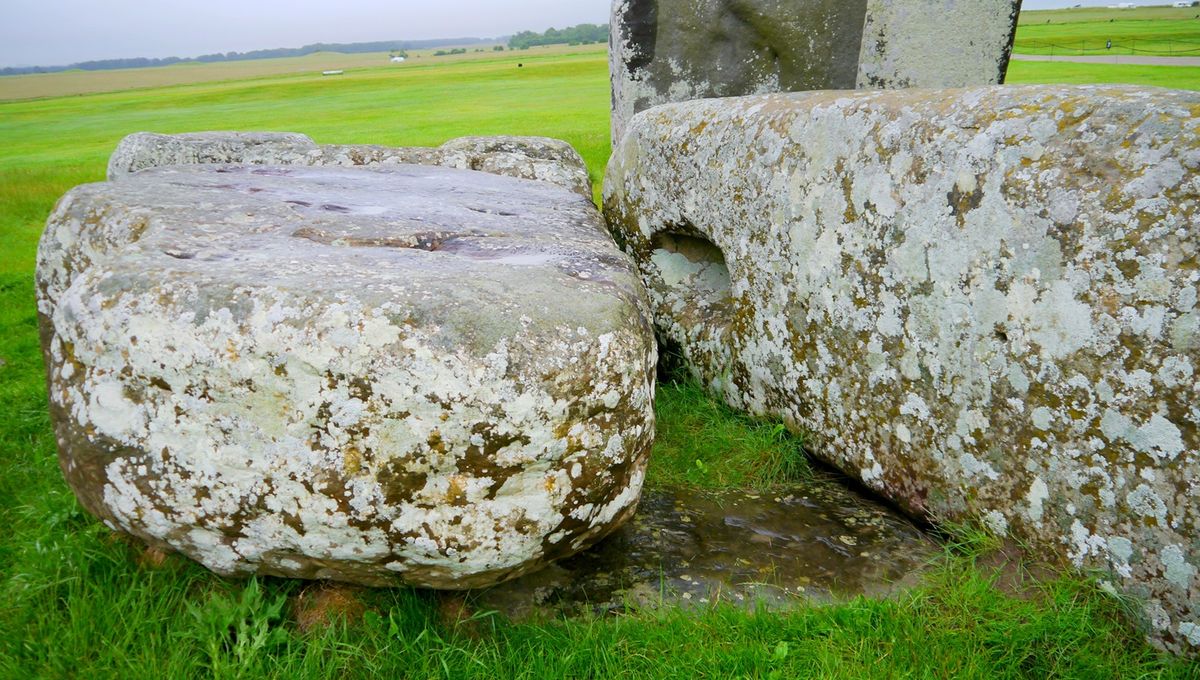
It was mere weeks ago that the origin of Stonehenge’s Altar Stone was shockingly revealed to be hundreds of kilometers further away from the monument than previously thought. Now, another study has complicated the picture even more – by definitively ruling out the most likely location for the Altar Stone’s starting point.
There are few places as renowned for their mystery as Stonehenge. What was it built for? We don’t know. How were the stones shaped? Sorry, can’t help you. Is it even a real henge? Nope! You must be thinking of the one 20 miles further north.
Some of the most enduring of these questions center on the stones themselves. They’re not native to the Wiltshire plains where the monument stands, so how were they brought there? Theories abound, but they all depend to some extent on something even more fundamental: where did the stones originally come from?
For a long time, the answer was thought to be “Wales” – at least for the bluestones that began the construction. The journey from the Preseli Hills to Wiltshire would have been at least 200 kilometers – around 124 miles – making Stonehenge almost unique in the ancient world for how far the materials were transported for its creation.
But recently, new research has put even that distance to shame. Last year, it became clear that Stonehenge’s Altar Stone – a huge sandstone block in the heart of the monument, buried into the ground so as to lay flat against the surrounding plain – didn’t come from Wales at all. It’s Scottish.
It was a result that even the researchers responsible found hard to believe at first. The journey from northeast Scotland, where a study placed the Altar Stone’s origin just a few short weeks ago, would have been virtually impossible back in Neolithic times – let alone while trying to bring a 6-tonne lump of rock along for the trip as well.
“When I found out that it was Scottish, my team and I thought: ‘No way did people move this. It’s just too far’,” Anthony Clarke, lead author of that study and a PhD student at Curtin University’s School of Earth and Planetary Sciences, told IFLScience at the time. “It’s completely unprecedented.”
Nevertheless, the mystery seemed to be resolved: the Altar Stone came from the tip-top of Britain – most likely the island of Orkney, some experts believed, where sandstone is abundant and a similar tradition of moving stones to create megalithic monuments was known.
It was likely a “diplomatic gift”, historians suggested, with its exotic origin boosting the power and sacredness of Stonehenge; in turn, Stonehenge may have inspired some of the stone structures that dot the landscape on the Scottish island, too. It was a lovely tale of prehistoric cosmopolitanism.
There’s just one problem: turns out, the Altar Stone didn’t come from Orkney at all.
In a new new study, conducted separately from last month’s but with some of the same researchers involved, it’s now been found that the Altar Stone is in fact markedly different from those used in Orcadian stone circles such as the Stones of Stenness and the Ring of Brodgar.
Through X-ray diffraction, microscopy, various spectroscopy techniques, and heavy minerals analysis of both the Altar Stone and 12 stones, similar in size and shape to the Altar Stone, from the two Orkney circles. When the results were compared, the team found “no match,” the study reports.
“Based on the mineralogical and geochemical investigations undertaken,” it concludes, “the Stonehenge Altar Stone […] was not sourced from Mainland Orkney.”
It’s a surprising result. “Everybody and their dog would have said: ‘Let’s try Orkney first. It’s going to be Orkney,’” study co-author Dr Rob Ixer, an honorary senior research fellow at University College London, told The Guardian. “Life would have been far simpler had it turned out to be similar to the stones of Brodgar.”
While it may seem like bad news that such a natural origin point has been so comprehensively ruled out, Henge-heads remain undaunted.
“I and my other colleagues in the team will continue to work to pin down where exactly in the north-east of Scotland the Altar Stone came from,” lead author Richard Bevins, an honorary professor of geography and earth sciences at Aberystwyth University, said in a statement. “The mystery of where the stone came from is becoming clearer and clearer as we begin to rule out specific areas in north-east Scotland.”
“This research is radically changing our thinking about the origins of the Altar Stone,” he added. “It’s thrilling to know that our chemical analysis and dating work is slowly unlocking this great mystery.”
The study is published in the Journal of Archaeological Science: Reports.
Source Link: The Mystery Of Stonehenge's Altar Stone Just Got Even More Confusing